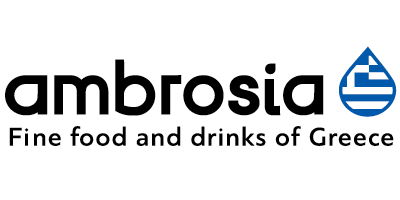The perfect “partner” to any food and not only souvlaki, Greek pita bread combines culinary creativity with versatility, and tradition.
Since the early days of the internationalization of souvlaki, and its recognition as a serious contender in the field of ethnic street food, Greek pita bread has come a long way. Having remained unchanged for decades, it is currently evolving at great speed. Highly mechanized processes, specialized equipment, respect for the traditional practices, as well as a variety of product offerings are spearheading the efforts of the Greek pita industry to dominate the global marketplace as the number one choice when it comes to flatbreads. In Greece, 25 companies produce pita bread, with only 4 of them operating on an industrial level, while the rest are artisanal brands.
Taste the Greek difference
Pita, the flatbread baked from wheat flour that can be wrapped around food and consumed as a kind of sandwich, is not a Greek invention per se. Τhis round pocket bread has been a staple of the Southeast Mediterranean for 4,000 years. It is used in many Mediterranean, Balkan and Middle Eastern cuisines and resembles other slightly leavened flatbreads such as Iranian nan-e barbari, among others. However similar, each of these flatbreads has its own distinct characteristics. More specifically, Greek pita bread is thicker, more versatile, and definitely fluffier than its counterparts.
High quality ingredients play a major part in the making and, thus, the taste of Greek pita, while the introduction of new technologies has helped improve the traditional recipe. When compared to Middle Eastern pita, the Greek offering is softer, does not contain sugar and owes its full-bodied flavor to the addition of yeast.
Not only for souvlaki
Not all pitas are created for the classic souvlaki combo. A variety of pita offerings have been developed for alternative, gourmet fillings, from chicken and salad to grilled vegetables to fish, etc. These new commodities that come in different flavors and shapes (square pita is very popular at the moment) are perfect for home-made snacks that resemble mostly sandwiches and wraps and not your average souvlaki.
“Greek pita bread can be found in most retail stores and super markets all over the world”
Revolution and evolution
A softer, fluffier pita bread seems to be the prerequisite for successful sales, and advanced technologies are paving the way for a better product. As a result, nowadays, pitas are a mix of traditional methods and innovation. Large companies are investing in expensive production lines, and specialized machinery that can make pitas according to specific –sometimes millennia-old– recipes, increase production, and achieve uniform quality. As demand for souvlaki and gyros is soaring, the original Greek pita is taking the world by storm. In fact, more than 2.5 million pitas are consumed each summer in Greece, with numbers increasing year after year.
New technologies are also creating fresh and exciting offerings, both in flavor and shape. Bigger, mini-sized or squared, gluten-free, whole-grain, wheat, corn; whatever the need, Greek companies can cater to it. Industry insiders, however, agree that although novelties are a natural evolution for Greek pita production companies in order to improve their profits, consumers still show a distinct preference to the classic, original round pita bread.
“A softer, fluffier pita bread seems to be the prerequisite for successful sales,
and advanced technologies are paving the way for a better product”
Pita around the world
There is a growing interest on Greek pita bread in the international markets, especially in certain European countries (mostly in the United Kingdom, Romania, and Bulgaria) as well as Australia, Africa, and Canada. This is due to a number of deciding factors, such as the increase in tourists arriving in Greece and tasting the real Greek pita for the first time. In addition, the founding of significant industrial units that can offer products adhering to the highest European and international quality standards, as well as the increased export potential of Greek companies, have helped create a strong momentum for the particular flatbread.
Greek communities, and a boom in Greek grill houses in major international cities are leading the way for a surge in pita exports. Even so, things were not that easy: as far as exports are concerned, companies producing Greek pita have a strong presence in the foodservice industry but for many years were relatively absent from retail, although their product was and still is superior to that from other countries. High transportation costs, paired with the fact that pita bread is stored in freezing conditions, were limiting their market reach. Lately, however, Greek pita businesses have been taking steps to reverse the odds. As a result, pita bread will soon be found in most retail stores and super markets all over the world.



















